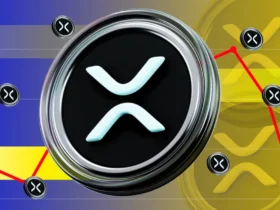Enjoy the 0xResearch newsletter today on Blockworks.co. Receive the news directly in your inbox tomorrow. Subscribe to the 0xResearch newsletter.
Use of “Trusted Execution Environments” for MEV
If you lose your iPhone today, you might worry that a hacker could gain access to your sensitive biometric facial and fingerprint data for their own gain.
But that’s not possible, thanks in large part to what is commonly known as a secure enclave. It is a type of chip that allows applications to process sensitive information separately from the phone’s main processor and operating system, allowing data protection against a potential attacker (or even Apple itself).
It turns out that crypto developers and researchers want to use this hardware-based technology for groundbreaking use cases in the blockchain world.
For example, secure enclaves, or ‘trusted execution environments’ (TEEs) as they are more commonly called in crypto, can be used to thwart the so-called MEV trilemma.
Ethereum’s public mempool is fast and decentralized, but not private, providing a profitable opportunity for MEV extractors.
Centralized block builders are fast and solve the “privacy” aspect, but they are not decentralized. This has emerged in an oligopolistic status quo where the dominant block builders such as Beaverbuild or Titan make exclusive deals with popular applications/wallets with high incoming transaction order flows, and then split the MEV profits among themselves.
You can have two traits, but not all three. In both scenarios, users get the short end of the stick.
In theory, TEEs could solve this by creating a decentralized MEV auction. As Flashbots’ Shea Ketsdever explains, users can send their trades privately to a block builder running within a TEE and have the guarantee that their order flow data won’t leak, protecting them from MEV attackers.
The block builder would remain decentralized as it resides in a secure enclave, and is now computationally fast thanks to Intel’s TDX, the tech company’s latest TEE technology.
That’s the bet Uniswap is making on the recently announced L2 rollup Unichain.
To mitigate MEV leaks, Unichain will run its block-building operations within a TEE, specifically Intel’s TDX hardware “which provides both private data access and verifiable execution via its computational integrity property” while “enabling attestations of execution.” [to] be posted publicly” so that anyone can verify that the blocks were indeed built in the TEE.
But when things seem too good to be true, they usually are. TEEs are of course subject to a lot of criticism, namely that they won’t be fast enough or the hardware won’t be secure enough, and that they rely on a piece of hardware built by Big Tech.
There are enough security issues that have spawned an entire “sgx.fail” website, which compiles the errors of Intel’s “Software Guard Extension” (SGX).
Regarding Unichain, Daniel Shapiro puts it succinctly in a recent Blockworks Research report:
A final risk to note is that much of the architectural design of the (Unichain) rollup relies on TEEs used in Flashbots’ verifiable block builder (rollup boost). Specifically, the initial TEE builder will run on Intel TDX hardware. There are long-standing, unresolved issues with TEEs regarding security issues. While Flashbot has addressed these challenges, it remains unclear how scalable this strategy is. As the chain grows, the incentive to attack will also increase. New security exploits may emerge that could put user funds at risk. In addition, there has been criticism of the TEE design with regard to transaction inclusion and priority inclusion.
—Donovan Choy
Is Off the Grid good for Avalanche L1?
We asked for more apps in crypto and they delivered.
With a unique combination of tactical gameplay, cyberpunk aesthetics and a blockchain-based economy, Gunzilla’s Off The Grid (OTG) has proven that consumer-facing applications can successfully integrate blockchain without alienating users. By implementing elements such as NFT-based in-game assets and allowing players to avoid direct interaction with blockchain mechanics, Gunzilla has created an inclusive and free-to-play platform that appeals to crypto enthusiasts and traditional gamers alike.
OTG has achieved several major milestones, including 6.1 million active addresses, 58 million transactions, over 1 million hours streamed on Twitch, and partnerships with many top gaming streamers such as Shroud and Ninja. If Off The Grid maintains its momentum, it could inspire other developers to create blockchain-powered games and potentially establish Avalanche as a hub for Web3 gaming and consumer applications.
Built on Avalanche’s L1 framework, OTG not only demonstrates Avalanche’s scalability and flexibility for game development, but also highlights the platform’s potential to attract new games and applications. Avalanche’s L1 infrastructure is positioned to attract developers who want to take advantage of the benefits of blockchain without compromising the gameplay experience. Emerging and existing features of Avalanche, such as ACP-77 and HyperSDK, not only make it more affordable for developers to launch their own L1 blockchain, but also provide a high-performance, low-cost, and abstracted experience to the end user.
While the best form of financial exposure to OTG’s early success is unclear, the game can still serve as a key driver for the Avalanche ecosystem (Avalanche’s Blizzard fund also co-led Gunzilla’s last funding round). Gunzilla has not yet introduced a native token or NFT model for public investments, although its future native token on the Gunz Avalanche L1 will play a role in the game’s economy (e.g. by paying for gas on its network). Additionally, Avalanche’s L1 economy is still evolving, with options such as the pay-as-you-go (PAYG) model that offers flexible options for validators and ecosystem participants, or to pre-stake 2,000 AVAX per validator to to take advantage of the interoperability between other Avalanche L1s.
Blockworks Research has covered the evolving Avalanche L1 economy (formerly known as subnets), for those interested in learning more. In addition, there are also Web3 Gaming Guilds that have both invested in OTG and use validators, offering another potential avenue for exposure.
Overall, OTG’s success indicates that blockchain can improve game development in meaningful ways by attracting non-crypto users and providing a viable blueprint for future blockchain-powered consumer applications. As more games and applications potentially adopt Avalanche’s blockchain framework, it could lead to increased network usage, validator participation, and overall ecosystem growth.
– Nikhil Chaturvedi
Chart of the day
Total supply of stablecoins increases:

Source: Artemis
The total supply of onchain stablecoins currently stands at $163.2 billion, inching closer to the record high of $166.4 billion in March 2022. The total market capitalization of stablecoins increased by approximately $1 billion in the past month, with approximately $1 billion per piece comes from USDT and USDC.
—Donovan Choy
Credit : cryptonews.net













Leave a Reply